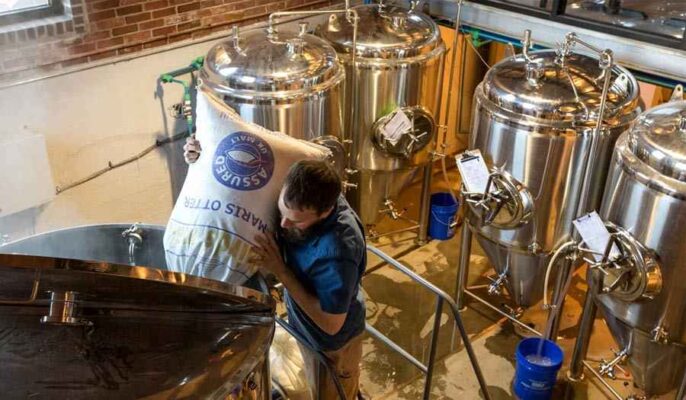What’s the difference between beer, wine, and whiskey? The most obvious answer is that they differ in their main ingredients. Beer and whiskey are both made from grains, while wine and similar beverages are made from grapes. But these products are more than it seems. Fermentation is the process used to brew beer. This is the process of using yeast to convert the sugar in the malt into alcohol. Are there meaningful differences between the brewing process and the distillation process? In this article, we will explore the differences and similarities between brewing and distillation.
What is the difference between brewing and distillation?
The brewing and distilling processes are very similar, but also very different. During the brewing process (or distilling beer), you grind the grains and extract the starch. These starches are converted into sugars, which are then placed in fermentation vessels. Next, yeast is added to produce alcohol. The whole process produces a small amount of alcohol.
Distillation (or distilling of alcohol) begins with much the same process as brewing. The same steps are taken to convert these starches into sugars, which are then placed in fermentation vessels. But distillation goes a step further. After the “brewing process,” the liquid is boiled to extract the alcohol, and the vapors are condensed into a liquid with a higher alcohol concentration.


Grain difference
Barley malt is used for brewing, and the milling step involves only a preliminary crushing. The housing is left intact to form a good filter capable of filtering out liquids.
During distillation, unmalted corn, rye, wheat or barley are often used, depending on the type of spirit being made. Malted corn or almost can be used, but this is not common.
Different distillation methods
One is “grain fermentation,” where the grain is ground as as possible and placed in a fermenter. The other is “threshing”, in which sugar water (or “wort”) is drained (or “filtered”) from the grains as in the brewing process.
What do brewing and distilling have in common?
Both breweries and distilleries use the same stock of raw materials. As a result, breweries generate profits for almost the entire distilling industry. In some cases, distilleries use distillers to produce wort and ferment it to produce alcohol, which can then be distilled.
The brewing process of wort is like beer brewing and is brewed in a brewery. Then, let the temperature return to normal, and add the yeast. The grain bill is modified, and Saccharomyces cerevisiae is able to ferment to a high degree. This ensures that the distilled product has the most possible alcohol content.
The yeast will use the carbohydrates in the mixture, and once the alcohol is formed, the next step is distillation. Depending on the type of alcohol being distilled, a pot still or a column still can be used in the distillation process. Many process stills use a mixed pot/column still, which is another still type. This type of still is used to manufacture a variety of goods. This fermented alcohol is first turned into a vapor by heating, then the vapor is allowed to cool and become a liquid again.
What is the difference between the equipment needed for distillation and brewing?
The equipment used in the brewing process is different from that used in distillation. During the brewing process, the initial crushing of the grains is coarse grinding, leaving the chaff intact. So the gap between the rollers of the roller mill will be larger. Use at least a two-roll mill or a four-roll mill to achieve effective comminution.
Distillation In the degranulation process, a four-roll mill is the best choice. A four-roll mill not only provides finer grains, but it also helps grind the harder grains that are used, such as unmalted corn, rye, and wheat. During fermentation, a six-roll, eight-roll or even hammer mill is recommended to achieve the finest grind possible.
Expansion capacity
The brewing and distilling industries have always existed as two distinct entities. But, this situation may start to change. At this point, the number one goal of any winery or brewery is to keep customers satisfied so that they continue to buy and enjoy their various products. People always seem to be looking for a “one-stop” experience where they have more choices. Businesses that provide this environment are more likely to keep existing consumers while attracting new ones due to the mindset of the typical customer.




